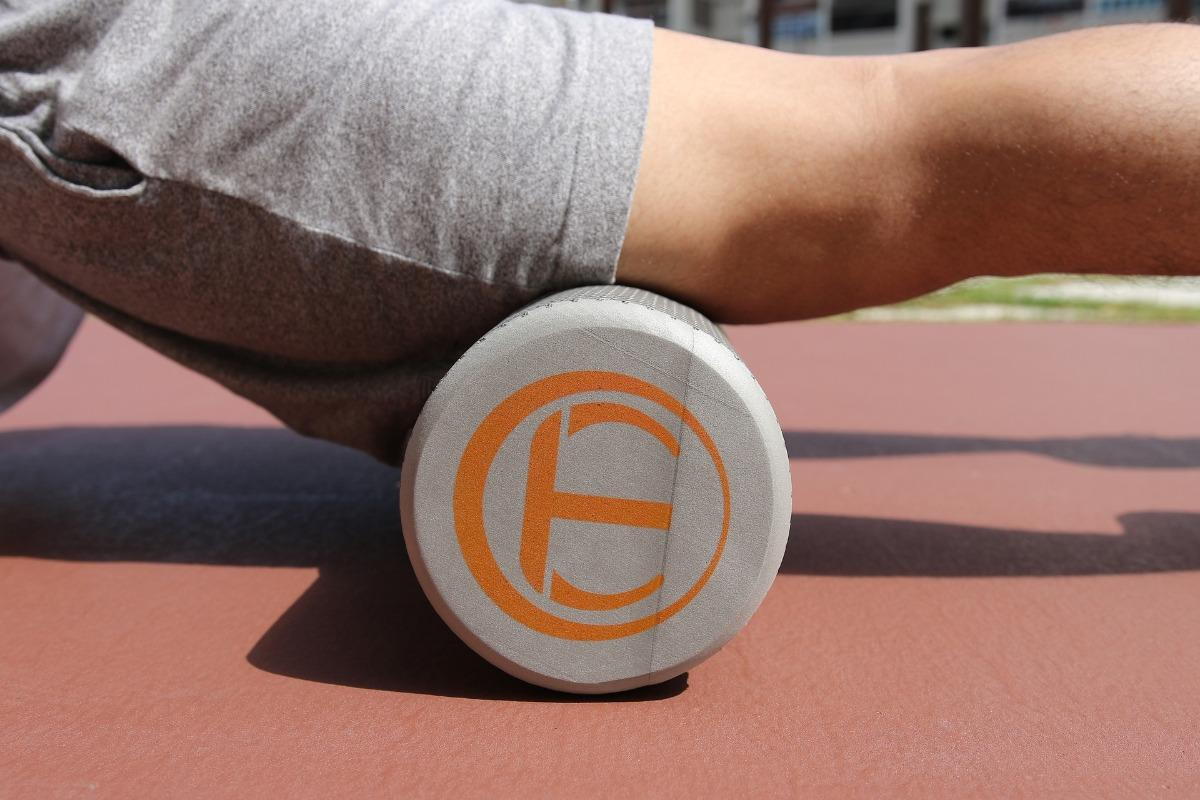
- posted: Oct. 28, 2019
What is Foam Rolling?
Foam rolling falls under the category of self-myofascial release. Self-myofascial release is basically self-massage to release muscle tightness or trigger points. It can be performed with a foam roller, lacrosse ball, or using hands. Pressure applied to specific points on the body can aid muscle recovery, i.e. muscles become elastic and healthy again.
What To Target And Why
It is important to target tight muscles as well as trigger points. Trigger points are specific “knots” that form in muscles, which are unique, because they refer pain. It means, when pressure is applied to one area of the body the pain is felt in another area.
For instance, when foam rolling the iliotibial (IT) band it is common to feel pain radiating either up to the hip or all the way down the leg to the ankle. When foam rolling tight or sore muscles some discomfort or pain should be expected. Just like with stretching, it should be uncomfortable, but not unbearable, and when done, it should feel better.
Releasing trigger points helps to reestablish proper movement patterns and pain free movement, and ultimately, enhances performance. Utilizing stretching alone is not always enough to release muscles tightness, which is why the use of foam rollers has become so common. Stretching itself is only beneficial for the unknotted portion of the muscle and the attachment points. The knot, however, remains unaltered. Foam rolling can assist in breaking up these muscle knots, resuming normal blood flow and function. The goal to any corrective or recovery technique is to get you back to the point of normal functioning.
Trigger points and tight muscles are a by-product of our daily lives. Both have the same contributing factors such as training, flexibility, movement patterns, posture, nutrition, hydration, rest, stress, and other lifestyle factors. Our bodies learn to compensate for what we throw at them every day, but we can exceed our ability to recover due to too many intense workouts, poor posture, and other lifestyle factors. Theoretically, If we lived a perfectly balanced lives we would never experience either of these conditions.
Bottomline, if our muscles are not taken care of properly we can experience loss of flexibility, adhesions, and painful movement. The deep compression of self-myofascial release allows normal blood flow to return and restoration of healthy tissue.
Which Muscles Need Foam Rolling?
Areas to focus on can be identified in two different ways. The first is through screenings. Functional movement screens, such as squat screening and hip hinge screening, are used by your physical therapist or chiropractor to determine which muscles are not functioning properly. Secondly, trigger points and tight muscles can be found through self-exploration or with the help of your massage therapist. Basically, get to know your body and include foam rolling in your workout and recovery program.
How To Foam Roll
To foam roll properly, apply moderate pressure to a specific muscle or muscle group using the roller and your body weight. Roll slowly, no more than one inch per second. When you find areas that are tight or painful, pause for several seconds and relax as much as possible. You should slowly start to feel the muscle releasing, and after 5-30 seconds the discomfort or pain should lessen. If an area is too painful to apply direct pressure, shift the roller and apply pressure on the surrounding area and gradually work to loosen the entire area. The goal is to restore healthy muscles. It is not a pain tolerance test.
Never roll a joint or bone. Avoid rolling your lower back. To target those muscles, use a tennis or lacrosse ball instead. If you are having issues with your neck, confer with a corrective exercise specialist, as the area can be more sensitive and require more advanced attention.
Note that you may be sore the next day. It should feel as if your muscles have been worked/released, without pushing yourself to the point of excessive soreness. Drink plenty of water, get enough sleep, and eat clean. This will help to flush your system and fuel your muscles more effectively. Give it 24-48 hours before focusing on the same area again.
- RIBS TEAM
Locations
Office Hours
Our Regular Schedule
8:30 am - 6:30 pm
8:30 am - 6:30 pm
8:30 am - 6:30 pm
8:30 am - 6:30 pm
8:30 am - 5:00 pm
Closed
9:00 am - 2:00 pm

